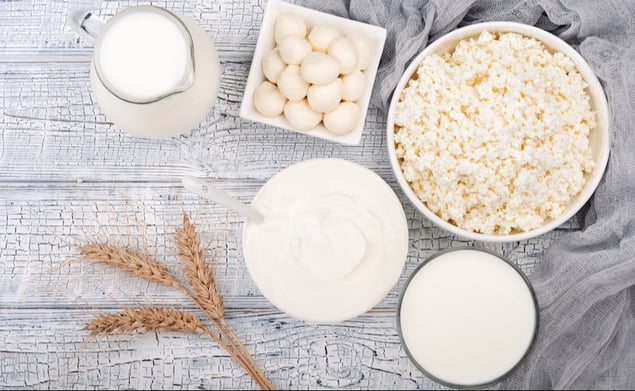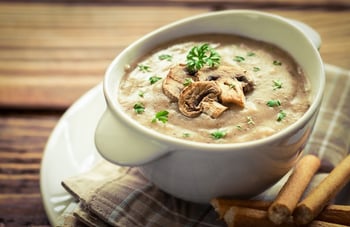 It’s no secret that today’s consumers are on the hunt for clean-label foods. As consumers actively seek out options that provide health benefits, there’s never been more pressure to make sure your products stand out among the competition on grocery and convenience store shelves. Food manufacturers must find ways to address consumer demands for better-for-you options that don’t compromise quality, taste or texture.
It’s no secret that today’s consumers are on the hunt for clean-label foods. As consumers actively seek out options that provide health benefits, there’s never been more pressure to make sure your products stand out among the competition on grocery and convenience store shelves. Food manufacturers must find ways to address consumer demands for better-for-you options that don’t compromise quality, taste or texture.
A simple way that food manufacturers can accomplish this — while also improving quality and optimizing ingredient costs — is by using whey protein concentrate. We’re not talking about whey protein isolate (WPI) or protein supplements used for strength training and bodybuilders. Instead, we’re referring to the type that’s used in everyday food applications including soups, sauces, dressings and myriad other creamy products.
What many food formulators haven’t understood, however, are the major differences between functional whey protein and its commodity counterparts. Here, we’ll help clear things up.
How Does Functional Whey Protein Differ?
The confusion over commodity products versus functional whey protein has caused some formulators to discount whey protein concentrate all together as a potential replacement for high-fat dairy ingredients like heavy cream and cream cheese in their formulations. That’s because many commodity products don’t perform well and are prone to separation, viscosity breakdown, off flavors and unappetizing textures.
When whey is created as a result of the cheesemaking process, protein can be isolated from the remaining liquid mixture and turned into a whey protein concentrate (WPC). This involves an ultra-filtration process that removes the water, minerals and lactose from the whey, leaving behind a more concentrated form of protein, hence the name.
Unlike commodity ingredients, functional whey proteins are created using zero chemical modifications, resulting in more desirable functionality for your applications, including improved shelf-stability, creamier mouthfeel and richer texture. Because of the way it’s produced, food labels can list it as an all-natural ingredient to comply with clean label initiatives.
Whey’s clean, neutral flavor and superior water-holding capabilities allow food technologists to maintain the same texture, flavor, and appearance of their original formulations, ensuring a consistent appearance and taste that won’t take consumers by surprise.
Health Benefits of Whey Protein
As consumers look for ways to reduce artificial ingredients, sugar and empty calories in their diets, food manufacturers continue to look for ways to improve and promote the health benefits of their products. Incorporating whey protein in its many forms not only improves a formulation’s taste and texture; it typically improves its nutritional profile, too.
Unlike plant-based proteins, it contains all the branched chain essential amino acids necessary for building muscle. The use of commodity products may run the risk of stripping whey of some of its nutritional value. Questionable sourcing and food safety are also added concerns for today’s mindful eaters.
Consumers increasingly want to know more than just what’s listed in the ingredients; they also want to know where their food came from, whether any animals were harmed in the making, how workers are treated, and whether environmental standards and ethical values are upheld by ingredient suppliers.
Scrutiny by consumers is expected to only increase in coming years, emphasizing the need to ensure a strict chain of custody and to carefully vet ingredients and those who produce them.
How to Formulate with Functional Whey Protein
Given functional whey protein’s impressive viscosity and gelation properties, along with its various flavor profiles, it’s ideal for use in a wide variety of applications, including both cold- and heat-processed systems. Because it’s easily hydrated, formulators need not worry about food formulation fails such as clumping, fish eyes and viscosity breakdown, even under high shear environments.
Some of the most popular formulations it can be used in include:
- Soups & sauces
- Spreads & dips
- Salad dressings
- Creamy Desserts
- Frozen confections
- And more
If you’ve dismissed whey protein as an alternative ingredient to premium dairy in the past based on a bad experience, it’s time to reconsider. Learn more about how ingredients, such as our Grande Bravo® functional whey protein, can help you create healthier products that cost less and perform up to your standards. Contact our formulation experts to help with your creamy application challenge.





